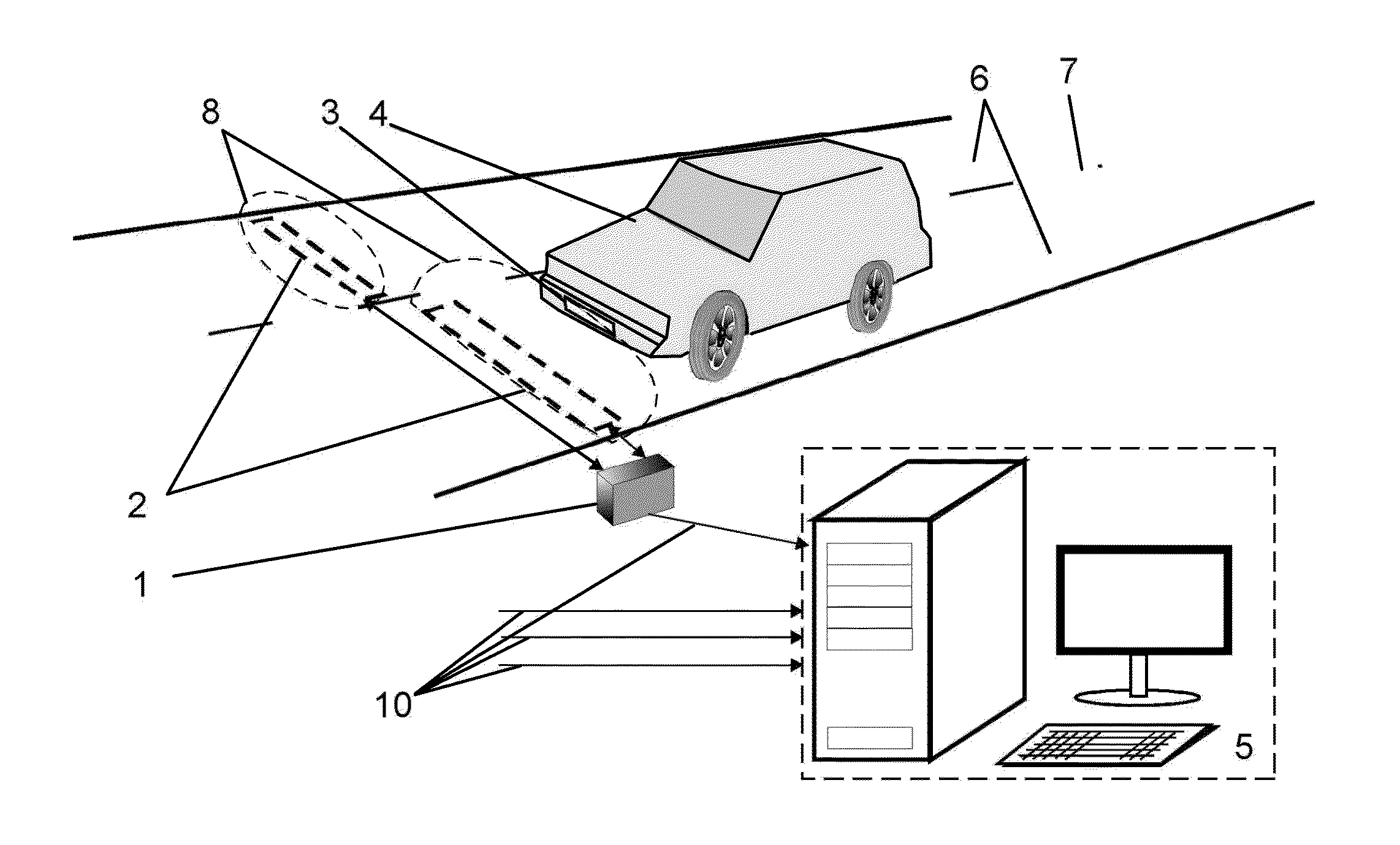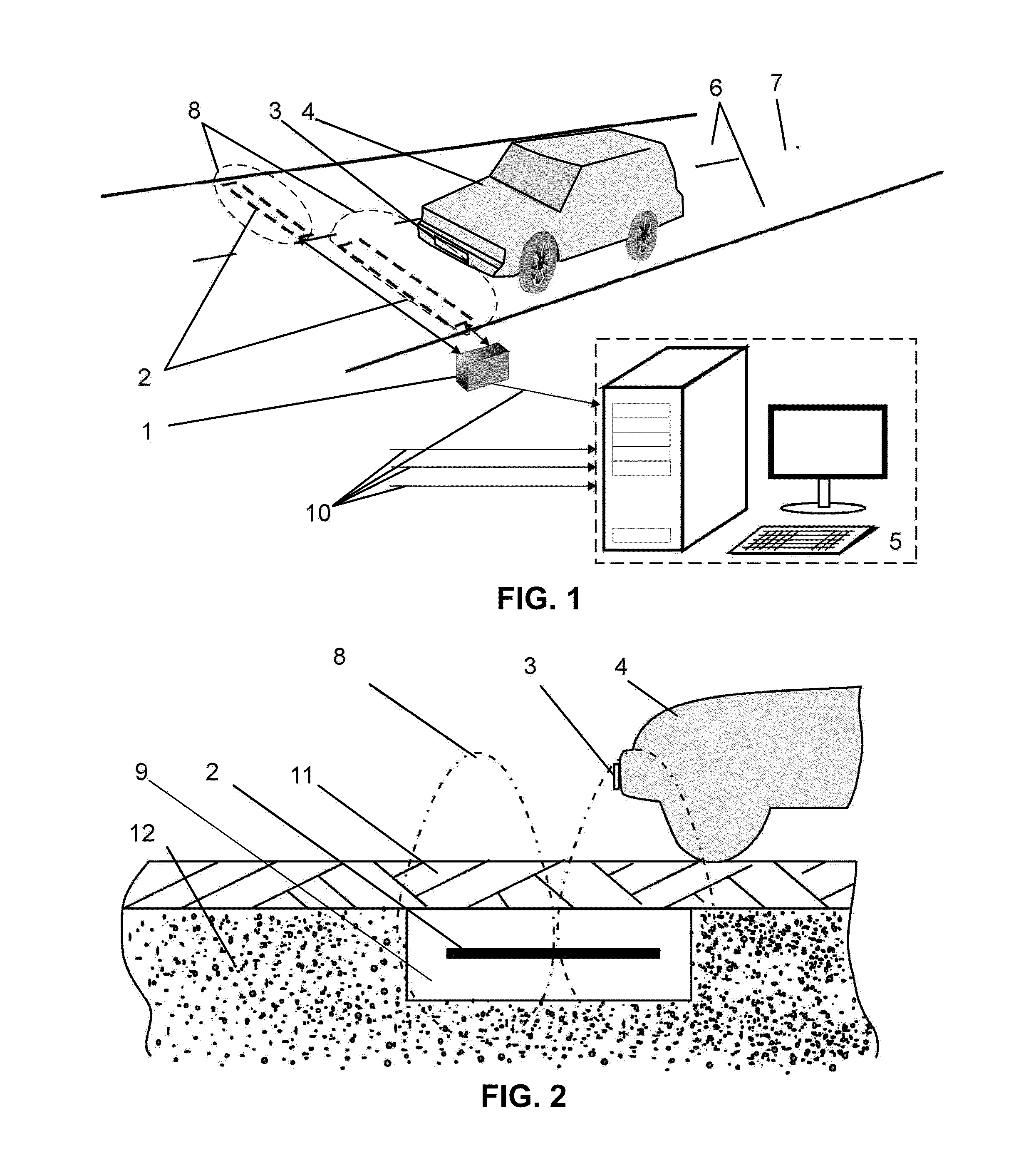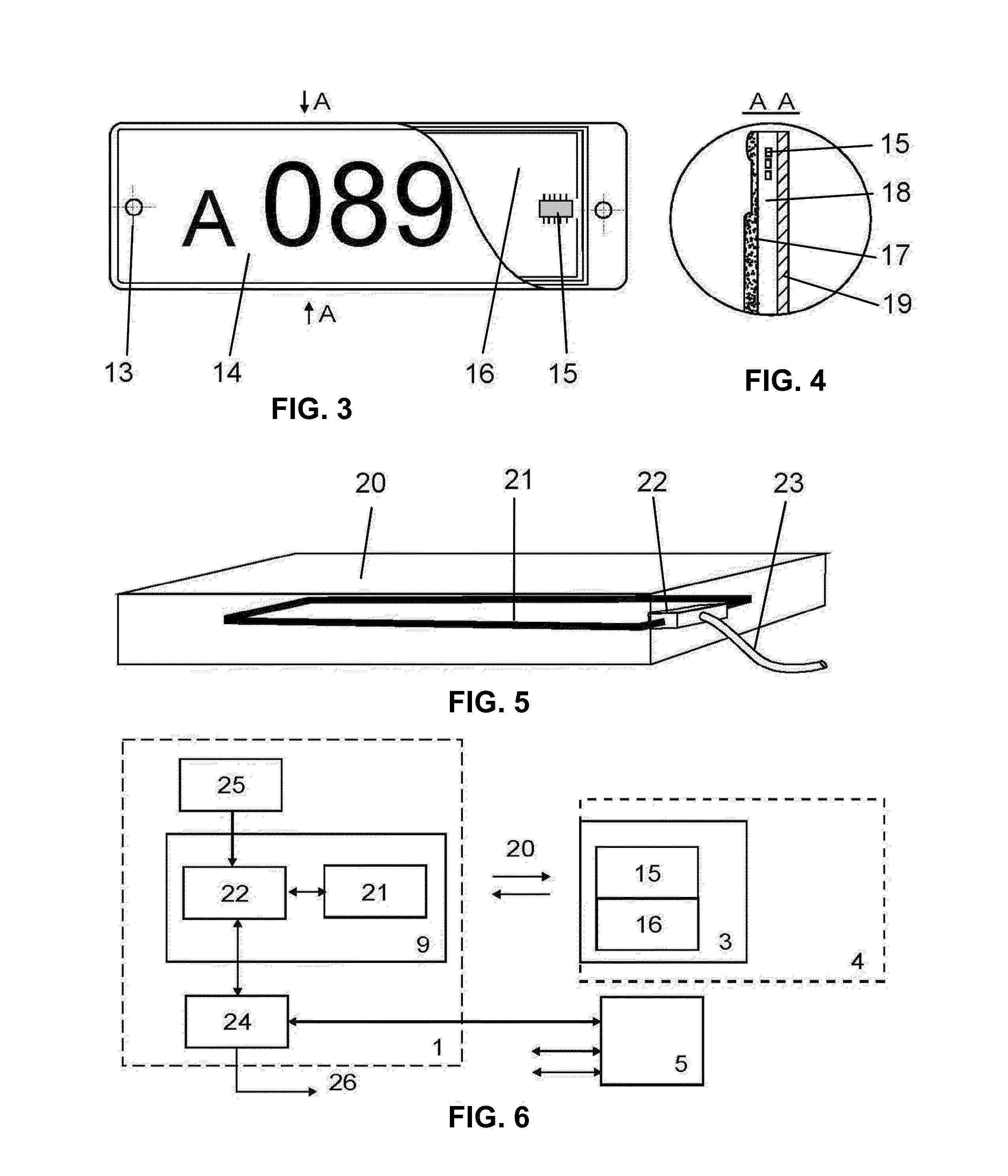Induction vehicle detection and identification system, induction license plate, and induction reader
a technology of induction vehicle and identification system, which is applied in the field of traffic control and registration by means of vehicle identification, can solve the problems of reducing the range and reliability of induction vehicles, affecting the safety of induction vehicles, so as to achieve the effect of simplifying the system and safe and reliable system operation
- Summary
- Abstract
- Description
- Claims
- Application Information
AI Technical Summary
Benefits of technology
Problems solved by technology
Method used
Image
Examples
Embodiment Construction
[0098]Reference will now be made in detail to the embodiments of the present invention, examples of which are illustrated in the accompanying drawings.
[0099]An induction vehicle detection and identification system comprises:[0100]an electronic vehicle identification device with a magnetic frame;[0101]a microchip with non-volatile memory for storing identification data of a vehicle with capacity of at least 64 bit;[0102]a reader to read data from electronic vehicle identification devices.
[0103]An electronic vehicle identification device is integrated into the license plate, thus making up an induction license plate mounted at the same place as a regular one.
[0104]The front side of an induction license plate is covered with identification data plate number for visual recognition.
[0105]The reader is equipped with a magnetic frame placed under the roadway up to 1 m deep. It can read information from the lane above. The frame is connected to a reader's generator, which feeds an alternati...
PUM
 Login to View More
Login to View More Abstract
Description
Claims
Application Information
 Login to View More
Login to View More - R&D
- Intellectual Property
- Life Sciences
- Materials
- Tech Scout
- Unparalleled Data Quality
- Higher Quality Content
- 60% Fewer Hallucinations
Browse by: Latest US Patents, China's latest patents, Technical Efficacy Thesaurus, Application Domain, Technology Topic, Popular Technical Reports.
© 2025 PatSnap. All rights reserved.Legal|Privacy policy|Modern Slavery Act Transparency Statement|Sitemap|About US| Contact US: help@patsnap.com



